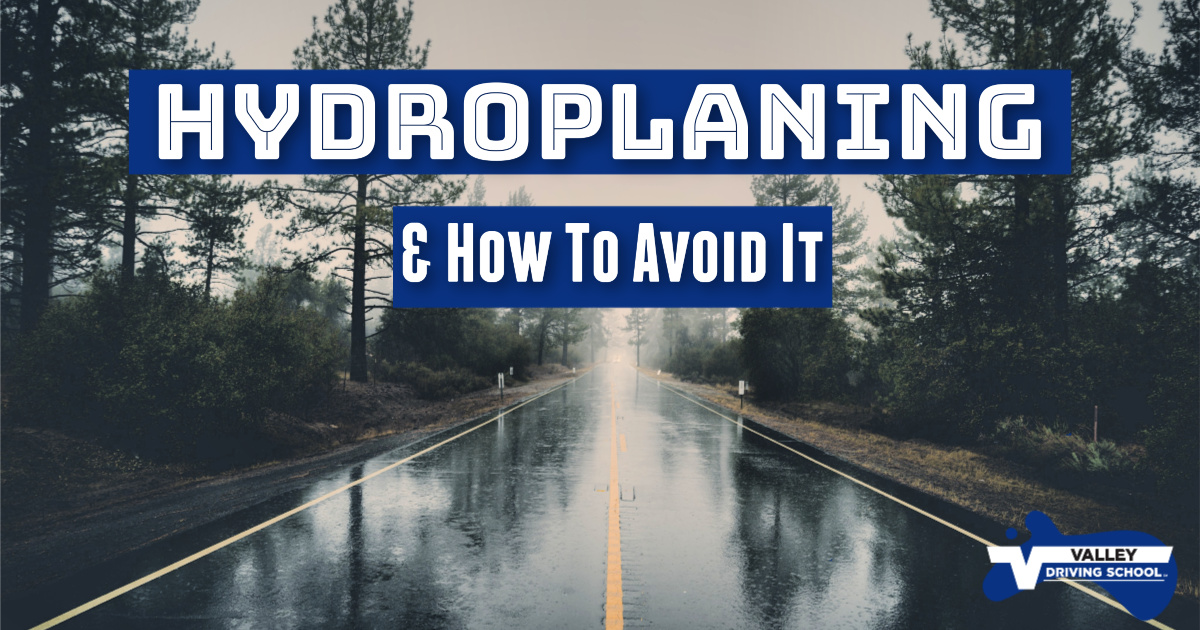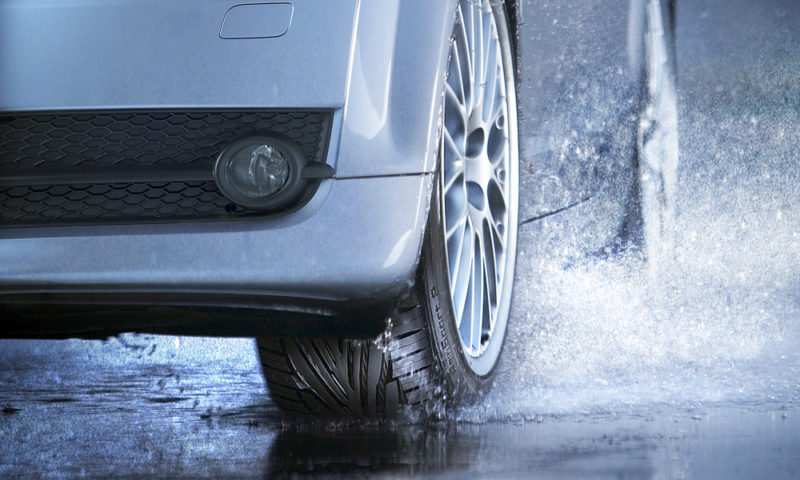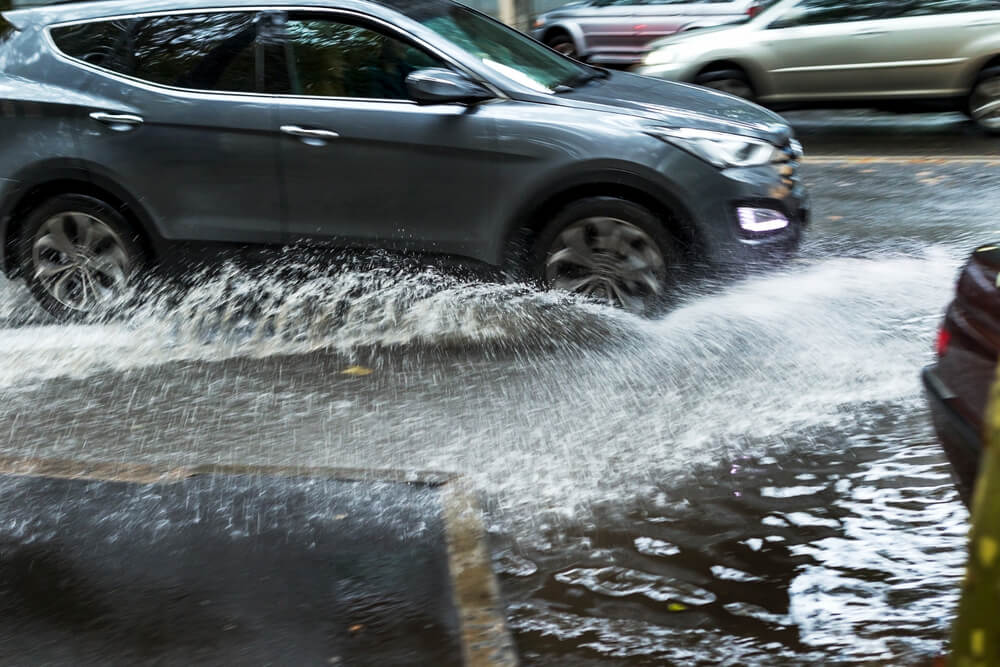British Columbians are exposed to our fair share of rainy weather but it’s not all dreary days and dampness. The wet, rainy, temperate climate is what gives us the world-famous, beautiful, and natural backyard we get to call home.

When roads become wet, as they do regularly here in BC, they can become slippery and susceptible to hydroplaning. Today we’re discussing hydroplaning and how you can prevent it from happening when you’re behind the wheel.
What Is Hydroplaning?
Hydroplaning, which is sometimes referred to as aquaplaning, refers to a driving scenario wherein a layer of water builds up and separates the wheels of a moving vehicle from the surface of the road. This can result in a loss of traction, steering control, and stopping power.
What Causes of Hydroplaning

Hydroplaning is caused by a combination of standing water on the road, car speed, and under-inflated or poor condition tires.
Hydroplaning can occur on any wet road surface, however, the first 10 minutes of a light rain can be the most dangerous. When light rain mixes with oil residue on the road surface, it creates slippery conditions that can cause vehicles, to hydroplane.
Vehicles rely heavily on the basics of physics to operate as we expect them to. Steering and friction are required to control the vehicle and we can lose this control when hydroplaning occurs. The risk of hydroplaning increases when the wheels and road are increasingly separated by water.
Over time vehicles impact the surface of the road. Heavy vehicles like transport trucks, work vehicles hauling loads, and recreational vehicles, create grooves in the road in the form of wheel tracks where water can pool in the event of heavy rain. Pooling water has the potential to increase the likelihood of hydroplaning. Like anything, better quality materials and higher quality road construction methods help minimize damage over time.
Asphalt isn’t the tough, hard substance we may think. Hot-mix pavement doesn’t resist rut formation and decompression of road surfaces too well, while asphalt-concrete mixes resist this better.

The cross slope and grade of road construction also contributes to water’s ability to drain or pool more easily. Grade is the steepness of the roadway and affects drainage and the force of the vehicle on the road. Meanwhile, think of the road’s cross slope as an upside-down V shape, which helps water drain away from the centre of the road surface.
The result of these two factors is called drainage gradient - most of which are required to exceed 0.5% according to most road design legislation. Drainage gradient may fall below the required slope in the entrances and exits of banked corners, contributing to the greater risk of hydroplaning.
When Does Hydroplaning Happen?
Hydroplaning can occur on any wet road surface, but specifically - it’s understood the first 10-15 minutes of a light rain can be the worst time to encounter hydroplane conditions, thanks to the initial mixing of water with oil residue on the road. Pair this with speeds in excess of 50 km/hr and the combination can create dangerous, slippery conditions and lead to hydroplaning.
Hydroplaning is also more likely to happen during periods of poor weather conditions other than rain. Conditions like heavy fog, ice, snow, and rain can equate to hydroplaning. It’s important to note heavy rain isn’t the standalone culprit of hydroplaning – it’s also because of slippery roads that drivers aren’t prepared for.
How Can You Avoid Hydroplaning?
- Keep your tires well maintained (appropriate tread depth) and properly inflated. Rotate and replace tires when necessary.
- Slow down when roads are wet: the faster you drive, the harder it is for your tires to scatter the water beneath your tires.
- Increase your following distance which allows a driver to see well ahead and adjust speed or lane position as needed.
- Avoid driving in lanes where water tends to accumulate (usually the outer lanes).
- Try to drive in the tire tracks left by the cars in front of you as they may have already cleared the standing water.
- Do not use cruise control when driving in the rain or when traction is reduced due to poor road conditions. It will take additional time to disable the function before beginning to regain control of your vehicle.
What If Hydroplaning Happens To You?

- Avoid hard braking. Ease off the accelerator if you feel a loss of traction.
- Avoid oversteering. Look where you want to go and gently steer in that direction (steering into the skid). This will help your tires realign with the direction your vehicle is travelling and will assist you in steering control once traction has been regained.
- Stay focused, calm, and remember how to react.
Avoiding driving on wet roads altogether is your best bet to avoid a hydroplane situation - if you’re able, avoid driving in poor conditions. Hydroplaning is a dangerous situation that often catches drivers off guard, and as we head into the rainy, wet season. Reviewing and updating our knowledge on driving in less-than-ideal road conditions or inclement weather is our best weapon to combat the likelihood of hydroplaning. Staying out of trouble is easier than getting out of it!
